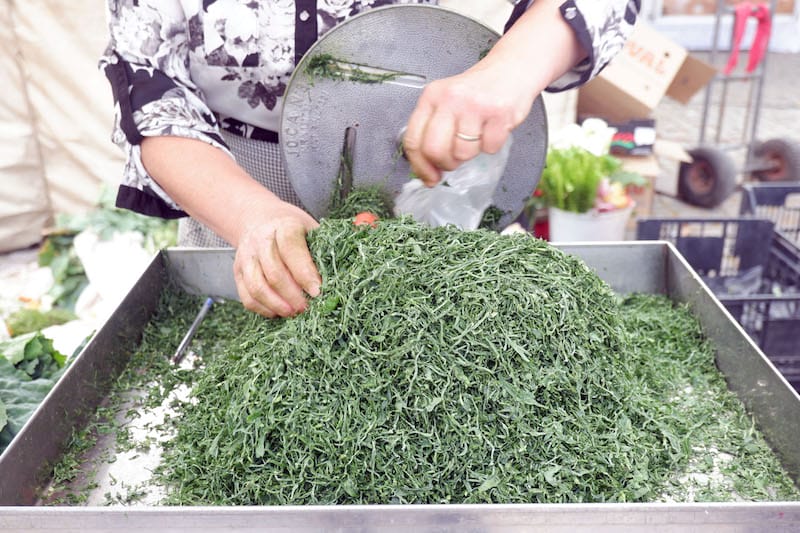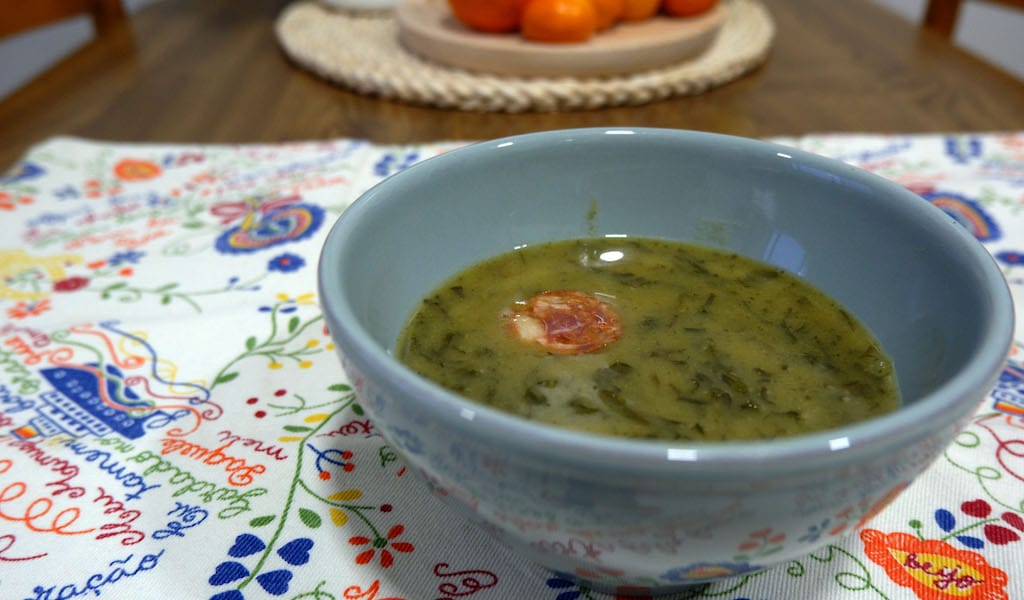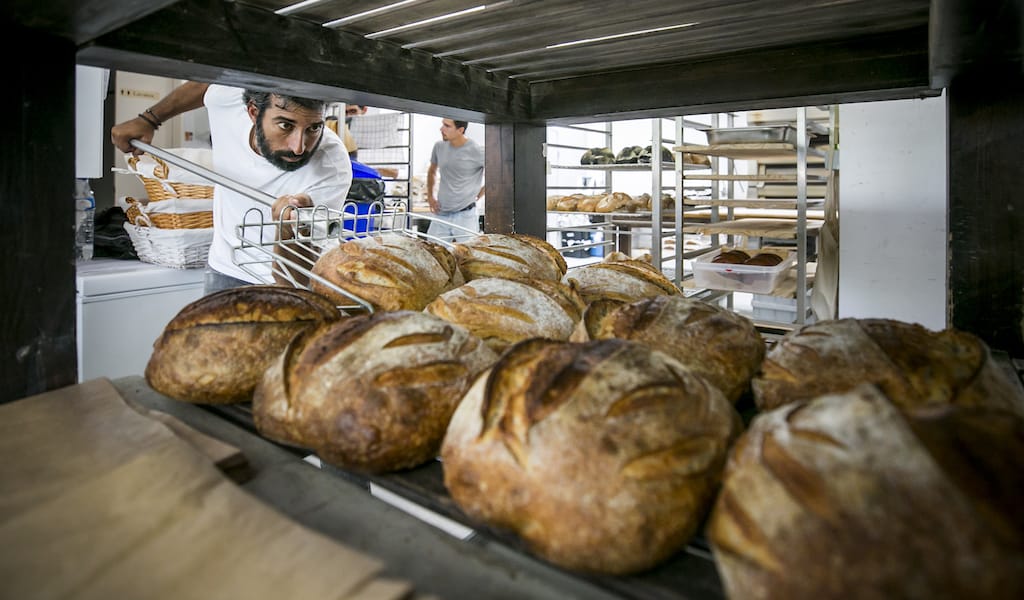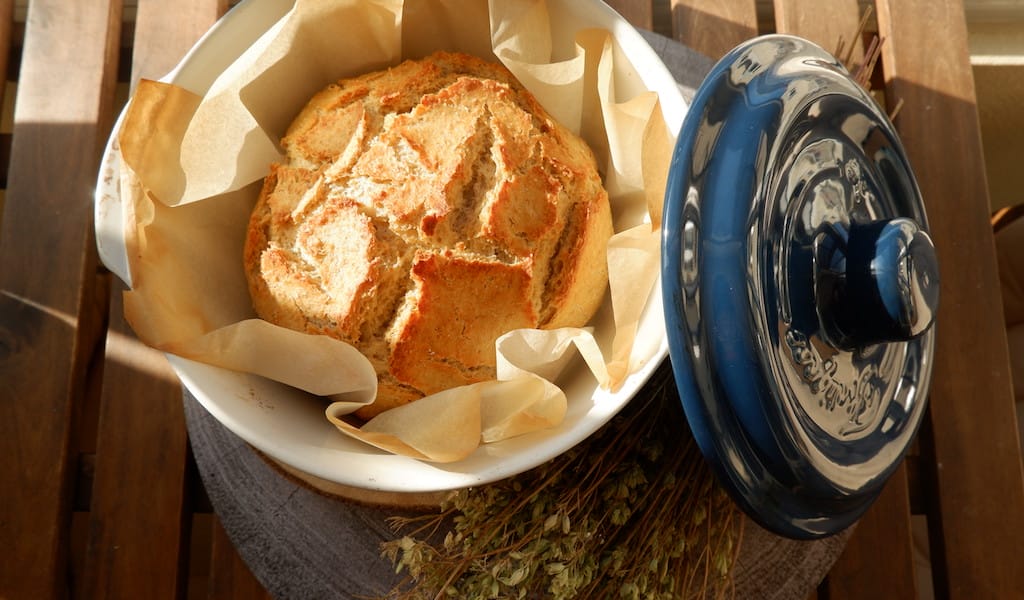Caldo verde, Portugal’s most famous soup, doesn’t sound like much in English – “green broth” is the literal translation. I was thinking about this when reading an article on the 20 best soups in the world, which a friend sent to me, noting that caldo verde (a “homey soup” where “thinly sliced greens meld with potatoes and onions”) had made the cut.
The article refers, in general, to the restorative power of soup, a belief that is held in very different cultures across the globe – which sounds about right to me. But then the author references a book that broadly defines soup as “just some stuff cooked in water, with the flavored water becoming a crucial part of the dish.” And I have to disagree there, because caldo verde is so much more than flavored water. How to explain that it is a feeling?
Let’s dive deeper into the caldo verde’s story, which begins sometime in the 15th century up in northern Portugal – Minho, to be more precise. It was an area of little wealth, and so they rustled up humble ingredients to make a soup that is equal parts filling and delicious. It began life as – and still is – a soup more typical of rural areas, but nowadays almost every restaurant in Portugal, whether a down-home spot or gourmet place, serves caldo verde. Any Portuguese person who arrives for a meal and is asked, “How about a caldo verde to start?” will almost surely say yes. A caldo verde always goes down well, especially when accompanied by bread (corn bread, preferably) and a glass of vinho verde.
Any Portuguese person who arrives for a meal and is asked, “How about a caldo verde to start?” will almost surely say yes.
The song “Uma Casa Portuguesa” (“A Portuguese House”), immortalized by the famous fado singer Amália Rodrigues, says it best: “Just a little, little to cheer up / A simple existence / It’s just love, bread and wine / And a green, green broth steaming in the bowl / It’s a Portuguese house, for sure.”
While soup is usually associated with cold nights, caldo verde is eaten any time of year, at any time of day. In Porto, a clay bowl of the soup is a must-eat during the festivities honoring São João (June 23), either as a side to the ubiquitous grilled sardines or later in the night, to replenish your energy during the non-stop party. But it’s also an everyday thing – I’ll get a bowl when deciding whether to order bifanas stuffed between bread or on a plate at Conga.
In fact, caldo verde pleases palates all over the country, and it’s said that it has already crossed the Atlantic, where it’s popular in Brazil. In 2011, the Portuguese chose caldo verde as one of the “Seven Wonders” of the country’s gastronomy. While I didn’t vote, I agree wholeheartedly with the decision.

All this talk gets my appetite going, so I put on my shoes and head to the fruit and vegetable market near my house, all the while thinking how lucky I am to be able to buy the fresh produce needed to make one of the 20 best soups in the world. A bag of kale (already sliced thin), chorizo (“Spicy, miss?” the vendor asks. “Yes, please!”), potatoes (“If it’s for caldo verde, take this one, it crumbles more,” says the woman at the produce stand) and onions (“These are from my hometown,” she adds). Around here, everyone knows what it takes to make a good caldo verde.
Cooking caldo verde is more art than science, but I’m curious what the Internet has in the way of recipes. After a quick search, all I see are images that look like anything but a perfect caldo verde. I prefer my mother’s way, even though I don’t have her recipe written down – she taught me how to make caldo verde by feel.
So that’s what I do. In a pot of boiling water, I add the chopped potatoes, onions and garlic cloves. Then one chunk of chorizo, which serves to flavor the broth. After they’re cooked, I remove the chorizo and take an immersion blender to the pot’s remaining contents. Only then does the kale come in – I throw in as much sliced kale as will fit in the pot, and then add the rest of the sliced chorizo and salt to taste. After three or four minutes of simmering, the soup is done. Serve with a drizzle of olive oil – only a drizzle! If you overdo it, you’ll spoil the soup.
It’s the perfect recipe for caldo verde. No secrets, no fuss. Just an incredible amount of flavor. There are those who eat the kale with a fork, but I think it’s best with a spoon – that way you get some of the “green broth.” And the chorizo is always eaten at the end. All you need now is love, bread and wine, and you’ve got a Portuguese home.
 July 19, 2021 Eddie’s Sweet Shop
July 19, 2021 Eddie’s Sweet Shop
When a streetcar ran down Queens’ Metropolitan Avenue in the first half of the 20th […] Posted in Queens November 13, 2020 A Rising Tide
November 13, 2020 A Rising Tide
The pandemic has inspired a new passion for quality loaves in Lisbon, a city saturated […] Posted in Lisbon December 25, 2020 Essential Bites
December 25, 2020 Essential Bites
In the three months of confinement in Porto, I had to learn to live very differently. […] Posted in Porto
Cláudia BrandãoCláudia Brandão
Published on April 16, 2021
Related stories
July 19, 2021
QueensWhen a streetcar ran down Queens’ Metropolitan Avenue in the first half of the 20th century, soda fountains like Eddie’s Sweet Shop were commonplace in big cities and small towns across America. Today, this hundred-year-old corner gem on Metropolitan in the leafy, Tudor-style enclave of Forest Hills is one of the last of its kind…
November 13, 2020
LisbonThe pandemic has inspired a new passion for quality loaves in Lisbon, a city saturated with industrialized bread. Baking bread became an escape for many people during global lockdowns, and the Portuguese capital was no exception – talk often turned to bread recipes or the desperate search for flour and yeast, which flew off supermarket shelves.…
December 25, 2020
Porto | By Cláudia Brandão
PortoIn the three months of confinement in Porto, I had to learn to live very differently. The days stretched on, embedded with a fear of going out. Those of us whose jobs permitted it learned to work from home, to spend all our free time confined within four walls, to look at the sky – and…

















































































